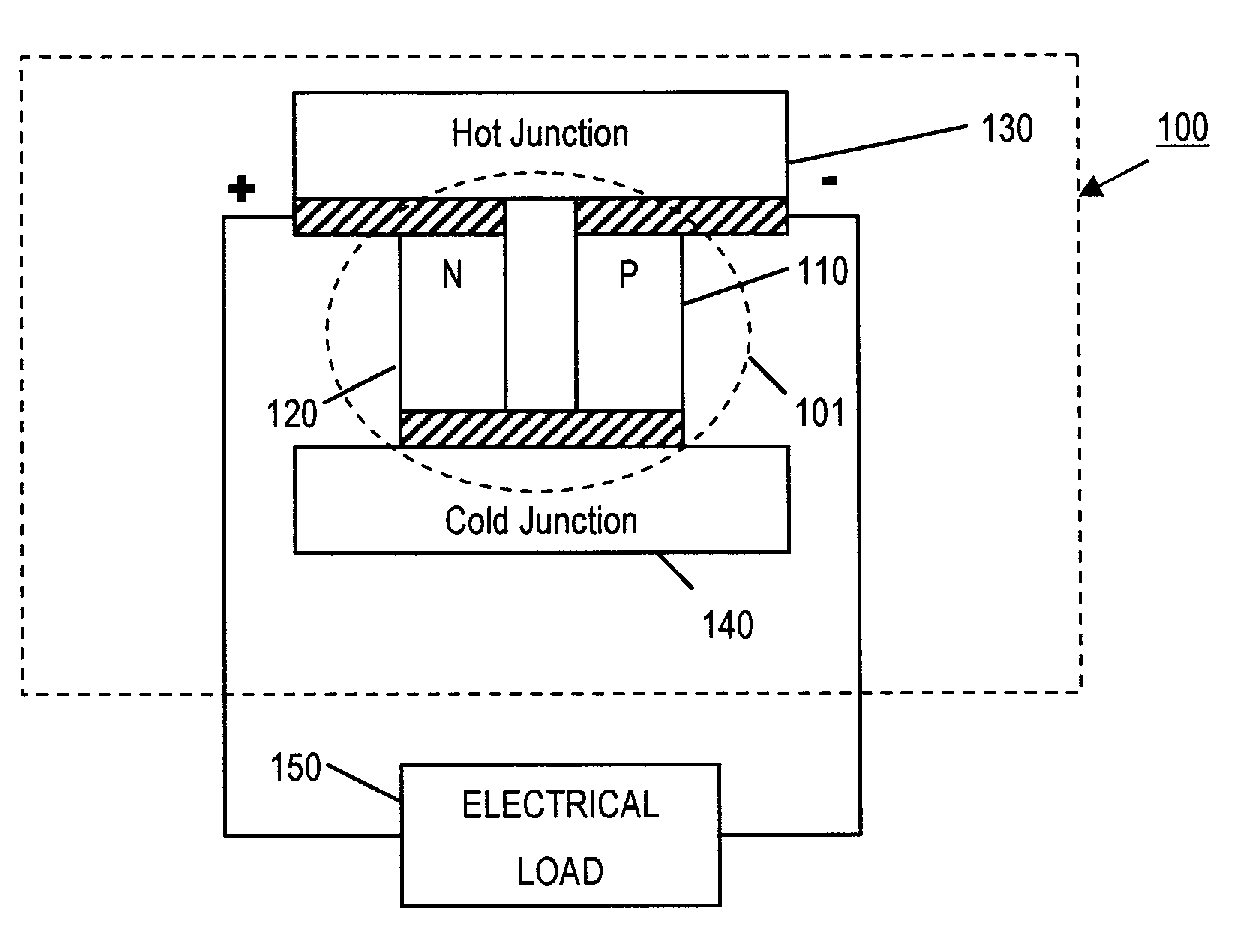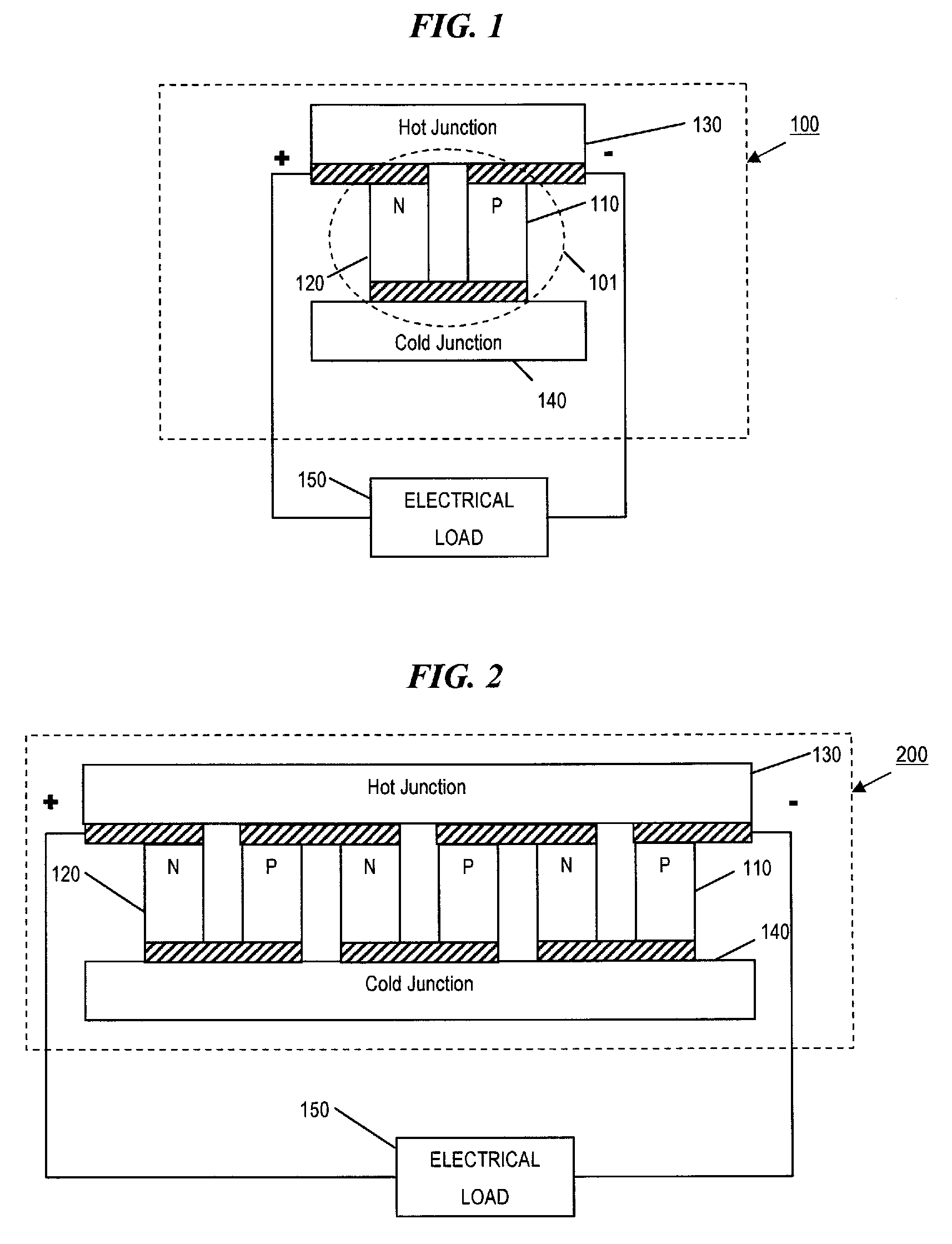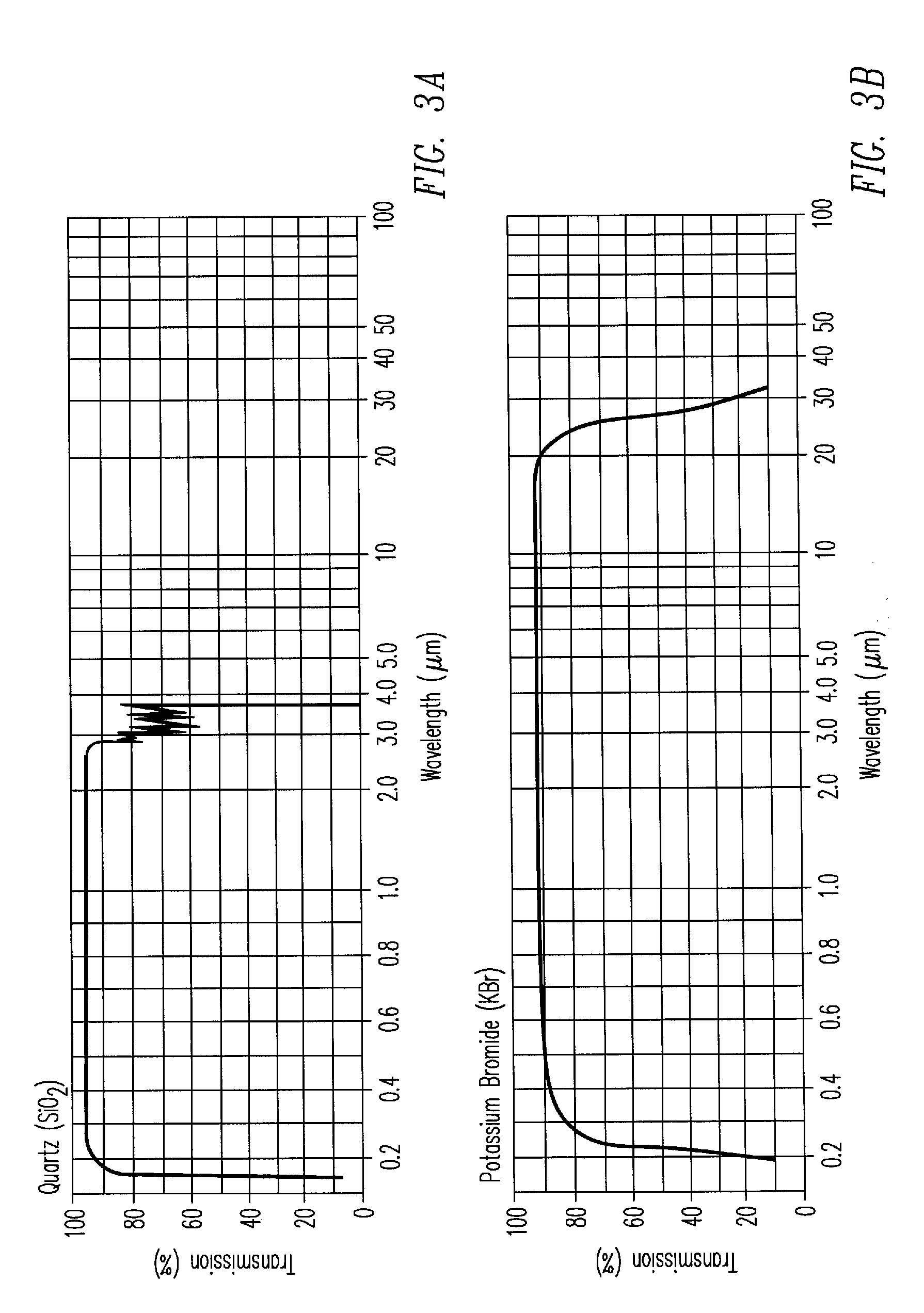Thermoelectric energy conversion
a technology of energy conversion and thermoelectric generator, applied in the manufacture/treatment of thermoelectric devices, thermoelectric devices, lighting and heating apparatus, etc., can solve the problems of inefficiency of production cost, power requirements that may not justify conventional generation methods, and solar cells are responsive to a limited portion
- Summary
- Abstract
- Description
- Claims
- Application Information
AI Technical Summary
Benefits of technology
Problems solved by technology
Method used
Image
Examples
Embodiment Construction
[0024]The concept of thermoelectric generation is well known. FIG. 1 illustrates a typical Seebeck Effect thermoelectric couple. A thermoelectric device 100 for electrical power generation usually involves using conventional thermoelectric couples 101, i.e., pairs of P and N doped semiconductor “pellets”110 and 120, respectively, of materials such as, for example, bismuth / telluride.
[0025]The performance of thermoelectric couple 101 is based on well known thermoelectric generation principles, commonly known as the Seebeck effect, which involves producing a current in a closed circuit of two dissimilar materials, i.e., N doped pellets 110 and P doped pellets 120, forming two junctions, where one junction is held at a higher temperature (hot junction 130) than the other junction (cold junction 140).
[0026]The elevated temperature at hot junction 130 drives electrons in N doped pellet 120 toward cold junction 140 and drives “holes” in P doped pellet 110 in the same direction, i.e., towar...
PUM
 Login to View More
Login to View More Abstract
Description
Claims
Application Information
 Login to View More
Login to View More - R&D
- Intellectual Property
- Life Sciences
- Materials
- Tech Scout
- Unparalleled Data Quality
- Higher Quality Content
- 60% Fewer Hallucinations
Browse by: Latest US Patents, China's latest patents, Technical Efficacy Thesaurus, Application Domain, Technology Topic, Popular Technical Reports.
© 2025 PatSnap. All rights reserved.Legal|Privacy policy|Modern Slavery Act Transparency Statement|Sitemap|About US| Contact US: help@patsnap.com



